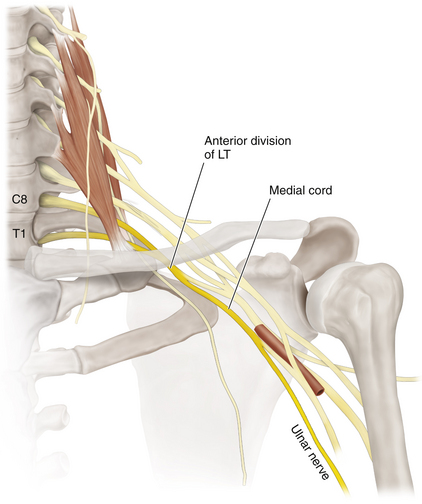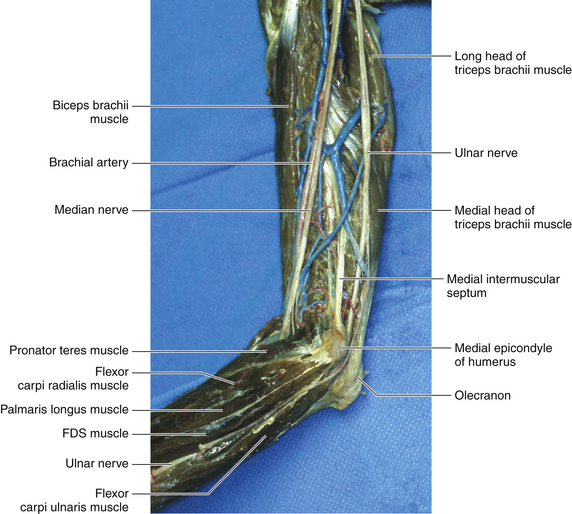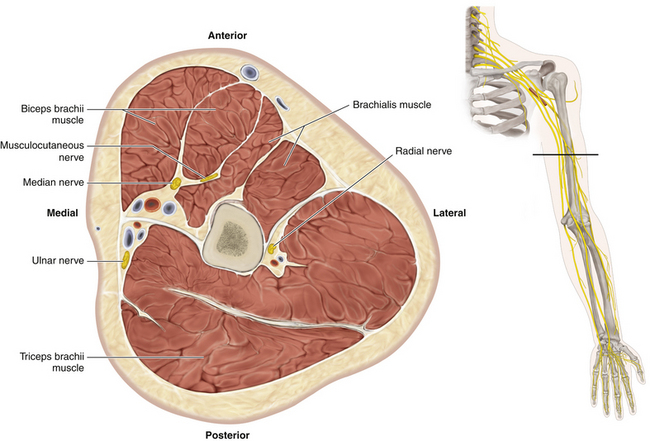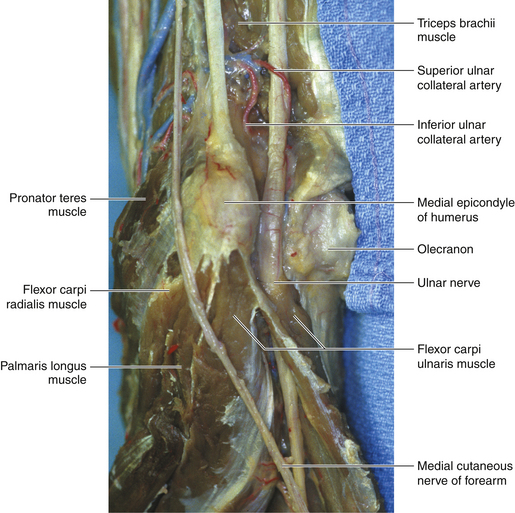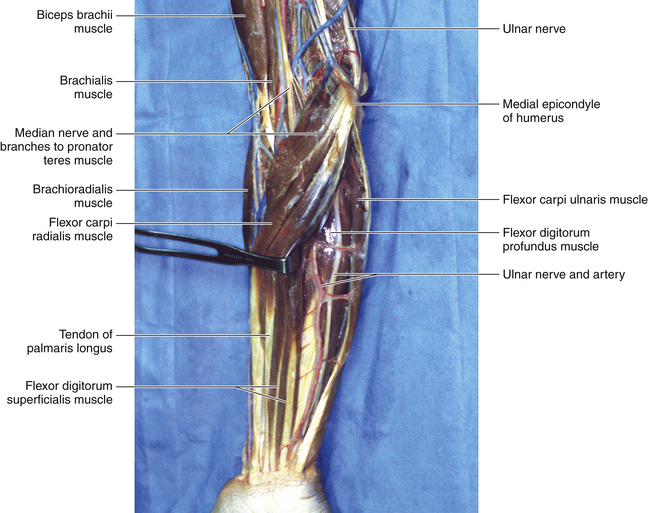Chapter 12 Ulnar Nerve
Anatomy
Ulnar Nerve Origin
• The medial cord of the brachial plexus continues as the ulnar nerve (Figure 12-1) below the origins of the medial cutaneous nerves of the arm and forearm and the medial head of the median nerve. At its origin, the ulnar nerve lies between the axillary artery and axillary vein, with the medial antebrachial cutaneous nerve in front of it.
• The ulnar nerve runs straight down from the medial cord complex to the medial epicondyle at the elbow joint (Figure 12-2).
Ulnar Nerve at the Proximal Arm
• The nerve lies deep and medial to the axillary-to-brachial artery segment. The ulnar nerve then descends the proximal arm anterior to the triceps and close to the median nerve.
• At the level of insertion of the deltoid, the ulnar nerve leaves the flexor compartment of the arm by running posterior to the medial intermuscular septum. The ulnar nerve is accompanied by the superior ulnar collateral artery and a motor branch to the triceps (radial).
• The nerve runs on the triceps, immediately deep to the investing fascia and just behind the medial intermuscular septum (Figure 12-3).
• In the upper arm, the ulnar nerve is found with reference to the brachial artery. The surgeon must distinguish the ulnar nerve from the median nerve (by relationship to the artery, by stimulation, and, with experience, by appearance).
• In the lower arm, there is a constant relationship of ulnar nerve to the olecranon notch. If it is difficult to find the nerve in the lower arm, it can always be found at the elbow and traced proximally (Figure 12-4).
Ulnar Nerve at the Elbow
• The ulnar nerve lies in the groove between the medial epicondyle of the humerus and the olecranon process of the ulna (Figure 12-5). Articular branches are given off to the elbow joint proximal to that structure; they are also given off while the nerve is between the olecranon and medial epicondyle and again while the nerve is below the ulnar collateral ligament.
• The nerve lies in close contact with the periosteum under the deep fascia of the arm and under an expansion of the triceps tendon that fuses medially with the deep fascia of the forearm.
• The ulnar nerve enters the forearm by passing between the two heads (humeral and ulnar) of the flexor carpi ulnaris (FCU). The nerve lies on the surface of the flexor digitorum profundus (FDP) and descends in a straight line to supply the ulnar part of the FDP that sends tendons to digits 4 and 5 (Figure 12-6).
Ulnar Nerve at Forearm Level
• As the ulnar artery passes distally, it runs medially and obliquely to reach the ulnar nerve at the middle of the forearm (Figures 12-7 and 12-8). The ulnar nerve emerges superficially from under cover of the flexor carpi ulnaris just above the wrist, lying medial to the artery and lateral to the tendon.
• Just as the key to finding the ulnar nerve in the distal arm is the olecranon notch, so the FCU tendon is the key to finding the nerve in the distal forearm (see Figure 12-7).
• The first muscular branch of the ulnar nerve is given off as the nerve passes between the two heads of the FCU. The ulnar nerve usually supplies the FCU in three or four branches.
• The dorsal branch is sensory in nature. It winds around, deep to the FCU tendon, to gain the extensor surface.
Stay updated, free articles. Join our Telegram channel

Full access? Get Clinical Tree


